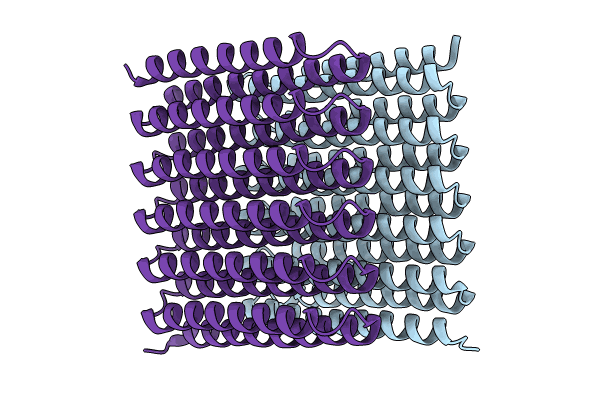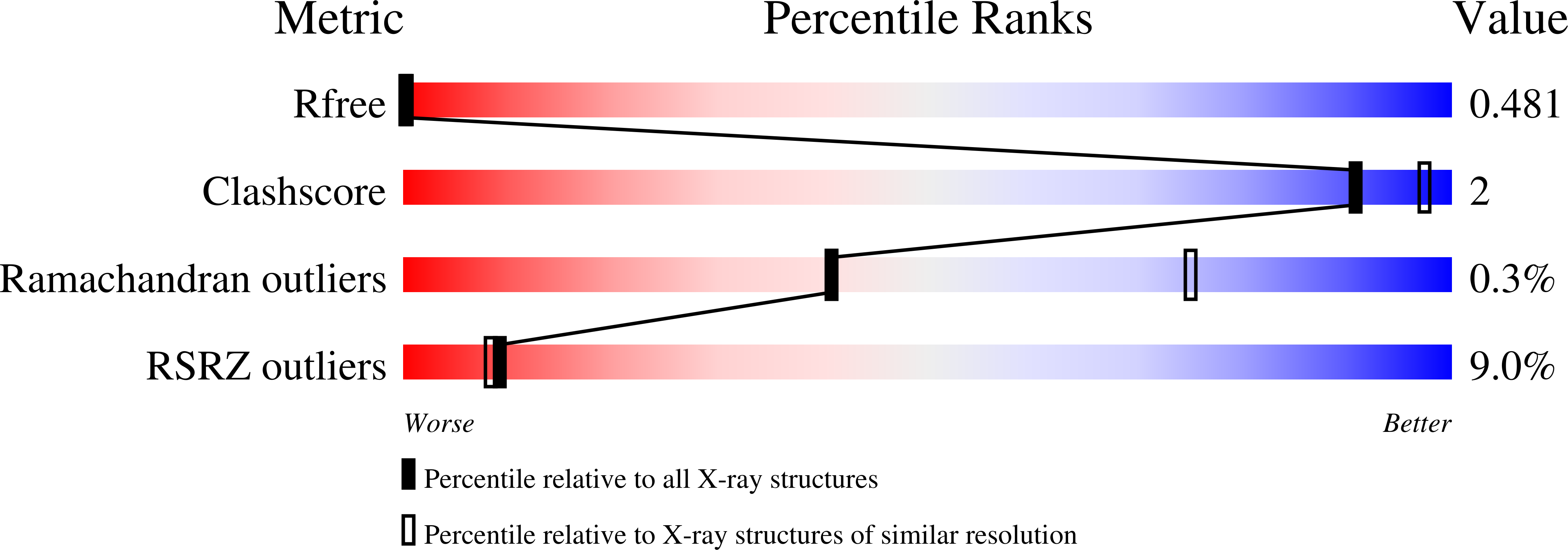
Deposition Date
2023-10-05
Release Date
2023-12-27
Last Version Date
2023-12-27
Entry Detail
Biological Source:
Source Organism:
synthetic construct (Taxon ID: 32630)
Host Organism:
Method Details:
Experimental Method:
Resolution:
4.00 Å
R-Value Free:
0.49
R-Value Work:
0.46
R-Value Observed:
0.46
Space Group:
P 1 21 1


